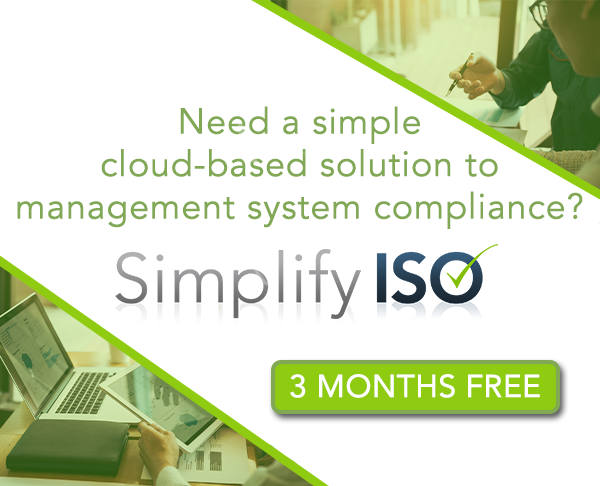ISO 9001 Basics Lesson #2 – Clause 6: Planning
The video below offers an explanation of Clause 6. Watch the video and use your pdf workbook to follow along with different action steps to help you document how your organization meets each requirement.

Below is a short summary of each of the subclauses that are discussed at length in the video.
Clause 6.1.1 – Actions to Address Risks and Opportunities
When you identify a risky activity that could cause a problem, this creates an opportunity to improve your system. Every risk contains an opportunity.
Enhance the good aspects of your system and improve the weak areas to avoid problems.
Clause 6.1.2 – Actions to Address Risks and Opportunities
This is the section where you create the plans to manage the risks you’ve identified. Some people use a spreadsheet, pop-ups on flowcharts, grids, tables – all kinds of formats will work.
ISO 31000 can be helpful for developing an approach to risk management.
By the way, you’re required to assess the effectiveness of these actions in 9.1.3 e) (Performance Evaluation) and have management review the effectiveness of these activities in 9.3.2 e), Management Review.
Clause 6.2 Quality Objectives and Planning to meet them
Objectives need to be set at relevant levels and functions in the organization.
6.2.2 Action plans to reach objectives:
- a) What activities will you do?
- b) What resources will you need?
- c) Who will be responsible?
- d) What is the time frame?
- e) How will the results be evaluated and reported?
Start with any Key Performance Indicators you have in place already. People will already know them.
Weave the measurements into your day-to-day activities. Communicate them (see 7.3 Awareness) and make everyone aware (see 7.4 Communication).
Clause 6.3 Planning of Changes
Changes to the management system need to be managed so there are no nasty surprised or unwanted results.
Things can Some sources of the need for change to your management system:
- Competitors
- Interested Parties
- Laws
- Customers (Internal and External)
- Exchange rate
- Non-conformances from Audits (Internal and External)
- Management Review
- Customer feedback
Use your risk management method when implementing the changes to avoid any ‘unwanted results’.


